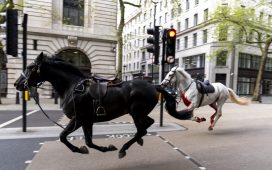There’s something very romantic about islands. For a start there’s the wonderful isolation, the feeling of relaxing remoteness, the total absence of bustling city commuters. Picture tropical palm trees waving above pristine white beaches, lapped by sparkling turquoise seas. Whatever the reason, everyone loves an island. People go to Rottnest in Western Australia to admire the quokkas, to Norfolk Island to soak up the fascinating history and bucolic scenery, and to Christmas Island for the red crab migration.
I am a twitcher and for me it’s always the birds. I go to Rottnest for terns, waders and red-capped robins, to Norfolk for parakeets, gerygones and California quail, and to Christmas Island for Abbott’s boobies, frigatebirds and rare vagrants. I’ve seen some fantastic vagrants (birds outside their usual range) on my five visits to Christmas Island. Apart from all the exciting endemics (birds that are unique to one place), I’ve seen 12 extraordinary vagrants, including such rarities as a red collared dove, a Malayan night heron and, best of all, a corn crake.

Vagrants on Cocos Island are even better. Today you can rely on seeing Saunders’ terns and white-breasted waterhens. This wasn’t always the case, but now they are reliably seen. As well as these dependable favourites, there are often some very rare birds on Cocos. In recent years I’ve seen several, including such gems as Von Schrenk’s bittern, drongo-cuckoo, black-crowned night heron and tree pipit.
Some islands are famous for special species, such as little penguins on Phillip Island in Victoria’s Western Port Bay or Lord Howe woodhen (naturally) on Lord Howe. Then there are herald petrels on Raine Island in far north Queensland, and Gould’s petrels on Cabbage Tree Island in New South Wales.
These last mentioned seabirds have an enthralling story to tell – a little known conservation success. Gould’s petrel is the only NSW bird to have a downgraded conservation status. It used to be endangered, but thanks to a lot of hard work by dedicated ornithologists and volunteers it has now been listed as vulnerable.

I visited 22 islands researching my new book, and each is special in its own way.
Islands are usually tranquil and relaxing, but seeing a mega rarity is always exciting. Sometimes I have to remind myself to breathe.
In many cases getting there is half the fun, but visiting Macquarie Island is more of an intrepid adventure than a luxury ocean cruise. On the other hand, when you visit Ashmore Reef off northern Western Australia or Boigu Island in the Torres Strait, getting there is an experience in itself. These places don’t feel like Australia at all.
Going to Macquarie may be difficult, but birders must go there, no matter how daunted they feel. How else can they get imperial shags onto their list? To say nothing of several species of penguins, Antarctic terns and redpolls.

The bird that I’ve seen most on my island adventures is the sacred kingfisher. These lovely birds with their pleasing and recognisable call are common everywhere from Norfolk Island to Ashmore Reef, from Rottnest to Bedarra.
They’re even present on the one inland island in my book – an artificial island created when the Ord River was dammed to make Lake Argyle in the 1970s. I don’t believe this island has an official name, but it is locally dubbed Chat island because there are so many yellow chats there.
When I visited, it was a birder’s paradise. We drew up a phenomenal birdlist including Australian bustard, long-toed stint, reeve, little curlew, red-winged parrot and (always a favourite) rainbow bee-eater.
These gorgeous birds, which I enjoy every summer in my home state of Victoria, also feature on Bedarra in northern Queensland, Ashmore Reef off Western Australia and in the Torres Strait, where we watched them migrating to New Guinea.

On Three Hummock Island off Tasmania I admired hooded dotterels and the Tasmanian race of wedge-tailed eagles. Both these species are classified as vulnerable.
And often I find something unexpected. Did you know that fairy prions breed on King Island? That bush stone-curlews on Kangaroo Island are smaller than on the mainland? That red-capped robins on Rottnest have a different call from their mainland mates?
Birding is my passion and I love doing it wherever I am. But birding on islands is always very special. Rarities are exciting wherever they turn up, but I appreciate our most common birds too, such as rainbow bee-eaters and eastern spinebills. Perhaps it’s the effort you put into getting to an island. Perhaps it’s the isolation. Whatever the reason, I reckon birding on Australia’s islands is about as good as it gets.
• Sue Taylor is the author of Birding Australia’s Islands, available in bookstores or online








